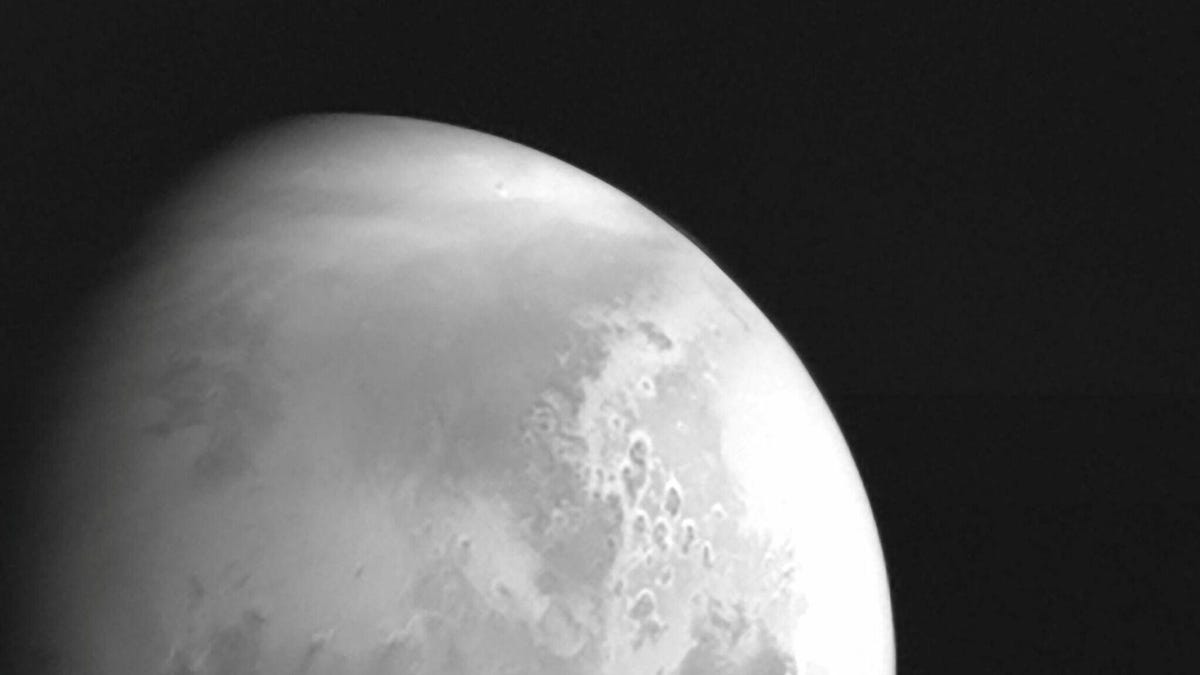China's Tianwen-1 mission to attempt daring Mars rover landing Friday
Since February, Tianwen-1 has been orbiting Mars, ready to deploy its lander and rover, Zhurong, to the surface of the red planet.

A view of Mars captured by China's Tianwen-1 spacecraft
China may soon become just the third country to safely touch down on the surface of Mars. On Friday, the China National Space Administration will attempt to land its Zhurong rover on the red planet, experiencing the so-called "seven minutes of terror" endured by Martian exploration robots, according to Chinese space watchers.
The ambitious Tianwen-1 mission to Mars launched in July 2020 and contains three spacecraft: an orbiter, which is now circling Mars, a lander and a rover. This is China's first mission to Mars, and landing on the planet is a difficult task -- only around half of the trips to the planet have proven successful, and no agency beside NASA has landed on the surface since 1973.
China's been relatively quiet about when we can expect the entry, descent and landing to begin, but reports suggest it will occur at 4:11 p.m. PT (11:11 p.m. UTC) on May 14. The lander and rover are currently encased within a protective shell, but will detach from the orbiter earlier and begin to head toward the surface.
When it hits the Martian atmosphere, the (approximately) seven minutes of terror begins. The lander-rover duo will slam into the tenuous atmosphere, safely tucked within a heat shield. Once the spacecraft punches through, the heat shield will fall away and a parachute will be deployed to slow the vehicle down.
Zhurong's landing will look a little different from that made by NASA's Perseverance rover in February. The NASA robot was lowered to the surface carefully via the agency's tried-and-true "skycrane" method, which saw the rover softly touch down in an ancient Mars lake bed.
Zhurong's descent will feel similar to Perseverance, but the lander will be doing all the work. It uses a suite of cameras and lidar to navigate to the surface. If the touchdown is a success, it will deploy a ramp for Zhurong to roll out onto Mars and begin its exploration mission.
The landing zone is Utopia Planitia, the same region of Mars where NASA's Viking 2 lander touched down in 1976. Viking 2 was a particularly interesting mission because some scientists suggested it had found signs of life.
China is aiming for Zhurong to spend 90 sols (Martian days) on the surface.
We'll be sure to have a livestream link if one becomes available -- but if the country's Chang'e missions to the moon are anything to go by, I wouldn't expect to see too much until landing has been confirmed. For those hungry for up-to-the-minute information, I'd suggest following journalist Andrew Jones and astronomy geek @Cosmic_Penguin.
Follow CNET's 2021 Space Calendar to stay up to date with all the latest space news this year. You can even add it to your own Google Calendar.

